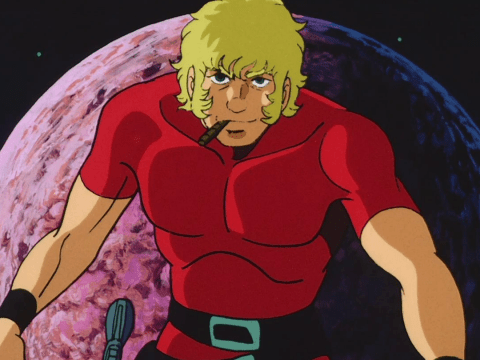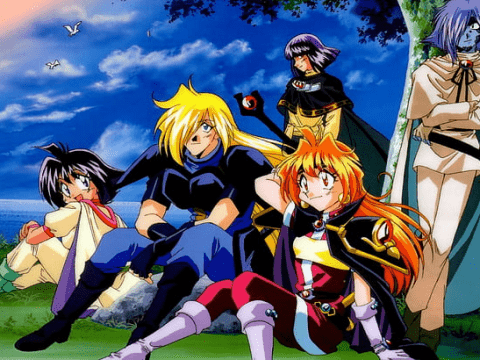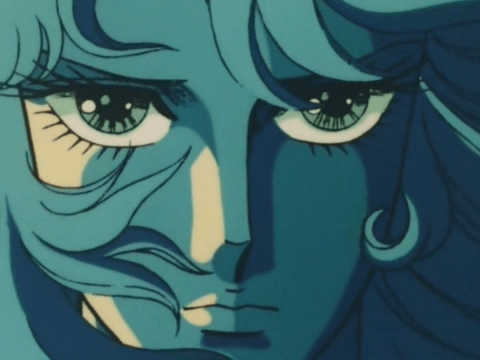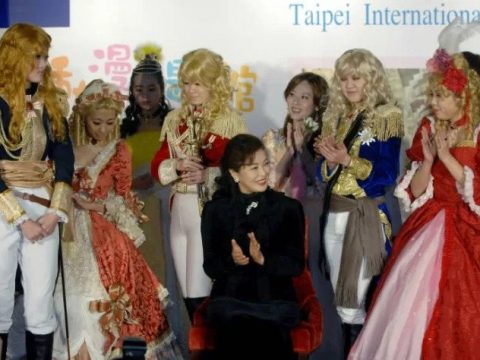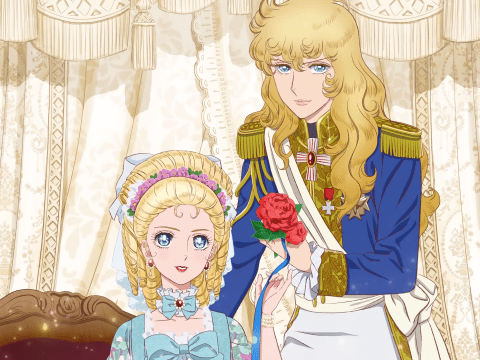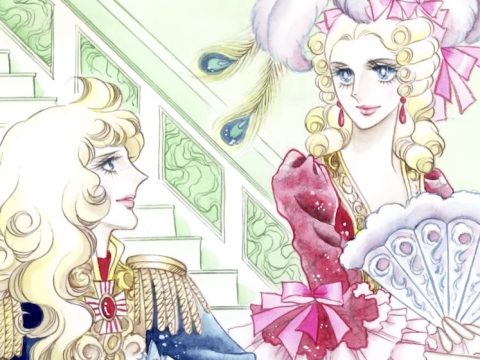Anime has a long and proud history of gender-bending and stereotype challenging, be it for comedic purposes or awkward romantic entanglements. But there is a through-line of three girls in particular who don’t just mirror each other, but directly inspired each other’s creation. One was raised to be a prince. One was raised to be a soldier. One chose the life of a prince for herself. And now, all three of these revolutionary anime heroines are getting a new lease on life on DVD in the United States.
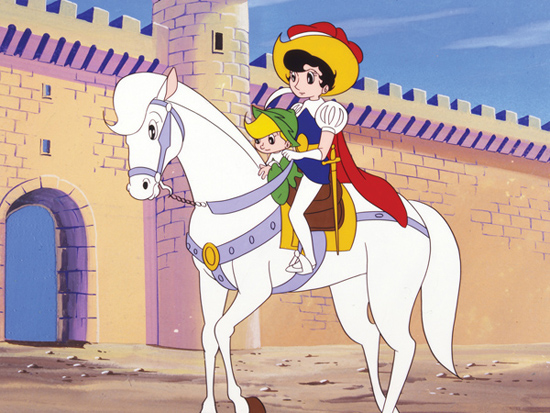
PRINCESS KNIGHT!
The first of anime’s prince/princesses came (not surprisingly) from the god of manga himself, Osamu Tezuka. Princess Knight (Ribon no kishi) was one of the first shojo anime/manga ever created, and in many ways set up the framework for what shojo anime of all stripes would become. Our heroine is Sapphire, a young princess who was born possessing the hearts of both a boy and a girl due to the antics of a cherub named Tink (Choppy in the dub). Appropriately enough to her problem, political intrigue and a patriarchal society force her parents to raise her as a boy to prevent the evil Duke Duralumon from being next in line to the throne. After failing to retrieve Sapphire’s blue heart of a boy and make her a proper young lady, Choppy shrugs the whole mess off and becomes her sidekick as she attempts to protect her true identity.
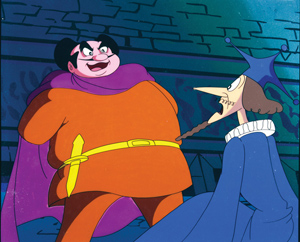 Princess Knight is fairly typical of Tezuka’s early work, more than a little similar to Astro Boy in its pacing and overall style. This holds doubly true if you’re watching the dub, which is the featured format for Right Stuf’s upcoming pair of DVD boxes. Like so many anime series of the 1960s and 1970s,
Princess Knight is fairly typical of Tezuka’s early work, more than a little similar to Astro Boy in its pacing and overall style. This holds doubly true if you’re watching the dub, which is the featured format for Right Stuf’s upcoming pair of DVD boxes. Like so many anime series of the 1960s and 1970s,
it is innovative and genre-shaping while being so quirky and self-aware that it doesn’t really seem to know what it’s starting. Say what you will about its historical importance, but it’s almost impossible to keep a straight face while an elf-fairy tells a talking Pegasus to give his best regards to Aphrodite. It’s all a part of the charm and appeal, though, and the whole feel of the series is as carefree and reckless as Sapphire herself.
It’s interesting to note, though, that for his first girl-oriented show, Tezuka chose a swashbuckling noble in disguise over a straightforward princess type (though late in the series, she does court a prince while disguised as her own exceedingly blonde sister). Shojo anime—and its magical girl
offshoots—would go on to feature all sorts of princess-y types in later years, but Sapphire herself would become the standard for some of the most memorable shojo heroines in anime history.
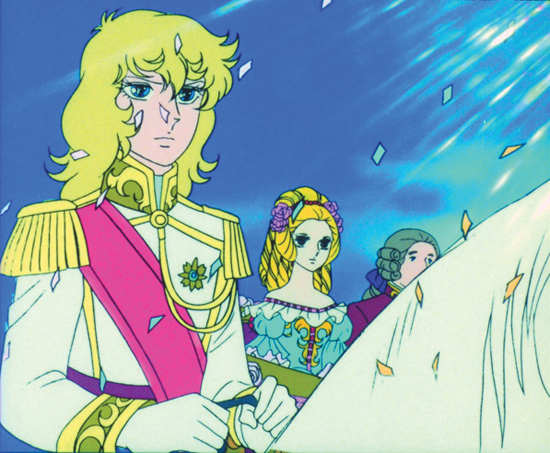
THE ROSE OF VERSAILLES
Case in point, Lady Oscar Francois de Jarjayes, the ensemble darkhorse of Riyoko Ikeda’s popular historical drama The Rose of Versailles. Created to be a supporting character to the story’s original protagonist, Marie Antoinette, Lady Oscar was created as a woman primarily because Ikeda wasn’t confident in writing for a male soldier. Thus, Oscar was born to a father weary of nothing but daughters who proceeded to raise her as a boy so someone could follow in his military footsteps.
Oscar’s persona is a mix of Takarazuka actresses and the aforementioned Princess Sapphire: androgynous toward masculinity without being tomboyish, self-assured, and really ridiculously good with a sword. She won the hearts of nobles both male and female—as well as those of her audience. In the original manga run, Oscar moved from 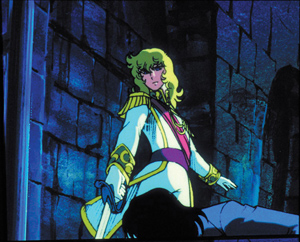 universal confidant and part-time badass to protagonist when fans became more intrigued with her than Marie Antionette. Osamu Dezaki’s anime adaptation from 1979 preserves that progression: early on, Rose of Versailles is the story of the French Revolution where Lady Oscar just happens to be, but she takes over mid-series as the plot follows her struggle to resolve romantic feelings with social standing.
universal confidant and part-time badass to protagonist when fans became more intrigued with her than Marie Antionette. Osamu Dezaki’s anime adaptation from 1979 preserves that progression: early on, Rose of Versailles is the story of the French Revolution where Lady Oscar just happens to be, but she takes over mid-series as the plot follows her struggle to resolve romantic feelings with social standing.
The anime adaptation has all the hallmarks of a Dezaki work, from abundant sparkles to photo-realistic shafts of light. Combined with Ikeda’s character designs, it is undoubtedly one of the prettiest shojo series ever produced, but it doesn’t stop there. As a series, Rose of Versailles is solid from beginning to end, even with the three-point turn that is its protagonist swap, even (and especially) with the blend of real-life events and heavy artistic license. While Princess Knight is a must-see for its innovation and historical importance, Rose of Versailles is equally a must-see simply for its overall artistry.
Just as Oscar was inspired by Sapphire, the two together would go on to become inspirations for another revolutionary heroine—this time in a very literal sense.
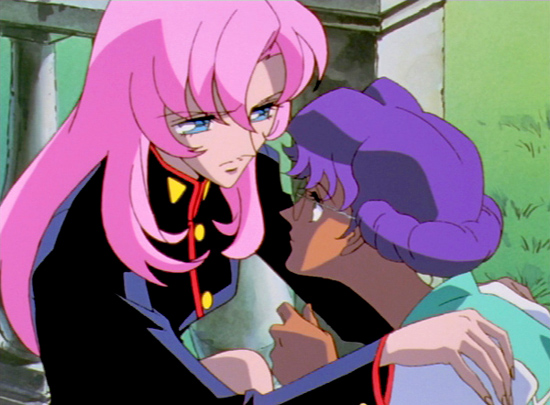
REVOLUTIONARY GIRL UTENA
Revolutionary Girl Utena hit Japan’s TV screens in 1996. Developed as an anime and a manga simultaneously, the series follows the titular heroine, who—like the others detailed here—has princely aspirations. In Utena Tenjou’s case, though, her choice to grow up to be a prince is her own, after being comforted by a mysterious prince when she was young. Her motivation, plus a signet ring given to her by said prince, embroils her in a power struggle at the high-end Ohtori Academy, whose student council duels for possession of “Rose Bride” Anthy Himemiya. The series’s popularity brought on a near-complete reimagining of the story in the 1999 film Adolescence of Utena.
It doesn’t take a lot of peering at source material to see that Utena is a blend of Princess Sapphire and Lady Oscar. And that’s not just in reference to character design—though her usual look is very Oscar-esque, and her “prince” form in fairy tale flashbacks is just this side of being Sapphire cosplay. Her personality is that same noble-yet-casual composure that makes her princely without being a tomboy or a caricature. And to that end, she’s just as appealing as her predecessors.
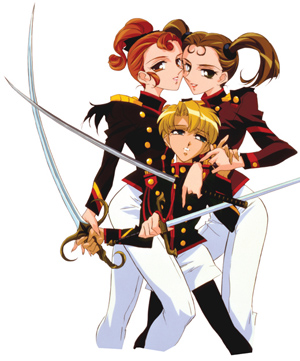 Utena as a show is equal parts elegant, epic, psychological, and straight-up trippy, weaving occasional magical girl elements into a very dark story of lies and manipulation. Then two weeks later someone lays an egg or turns into a cow or something. Despite the occasional complete left turns, there’s a strange coherence to the show that doesn’t really hit you until you’re way too far in to turn back.
Utena as a show is equal parts elegant, epic, psychological, and straight-up trippy, weaving occasional magical girl elements into a very dark story of lies and manipulation. Then two weeks later someone lays an egg or turns into a cow or something. Despite the occasional complete left turns, there’s a strange coherence to the show that doesn’t really hit you until you’re way too far in to turn back.
We’re in a great place in anime fandom right now, where older shows are becoming more easily accessible—and to have Princess Knight, Rose of Versailles, and a new release of Revolutionary Girl Utena come out all at once is a pretty lucky situation to be in. The three shows truly do go hand in hand: similar characters in three different environments, all drawing directly from each other.
Princess Knight, Rose of
Versailles, and Revolutionary Girl
Utena are available now from
Right Stuf.
UTENA, Revolutionary Girl (Shojo Kakumei Utena) © 1997 BE-PAPAS/CHIHO SAITO/SHOGAKUKAN ï SHOKAKU ï TV TOKYO.
PRINCESS KNIGHT Original Production © Mushi Production Co., Ltd.
The Rose of Versailles © Riyoko Ikeda • TMS All Rights Reserved. Under License to RIGHT STUF, INC. Produced by TMS Entertainment CO., LTD.


